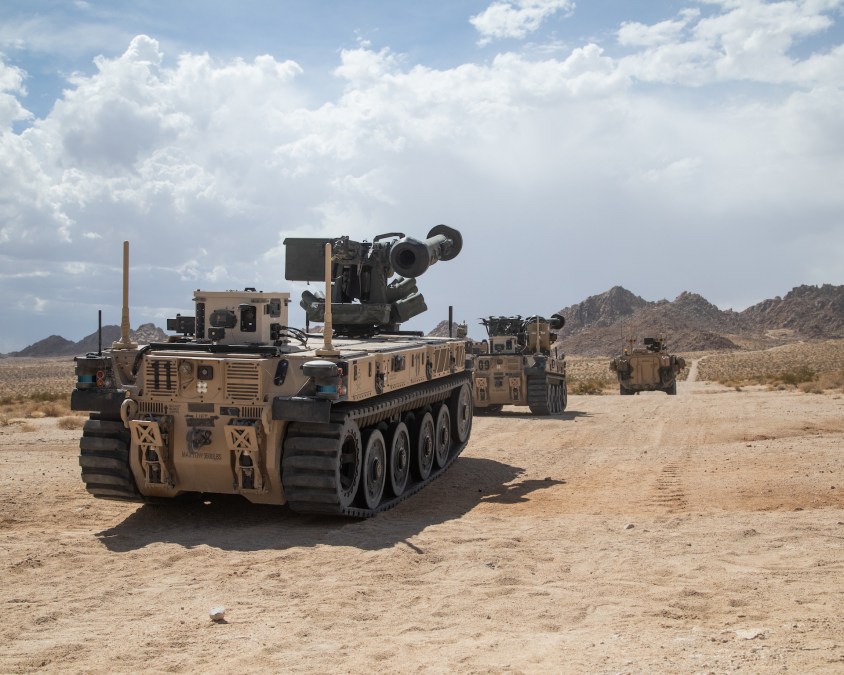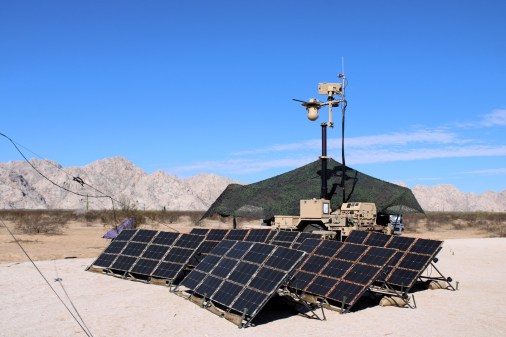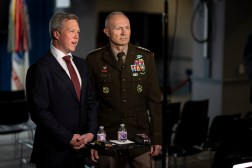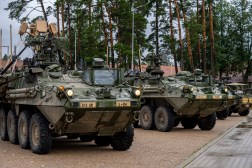Army envisions potential recompete for robotic combat vehicle program

The Army is poised to downselect to one platform vendor for the next phase of its robotic combat vehicle program, but in the future the service may hold another round of industry competition as it looks for additional capabilities, according to a leader of the initiative.
RCVs are a key component of the Army’s next-generation combat vehicle portfolio as the service moves to acquire new unmanned systems and create “human-machine integrated formations.” The aim is to make an RCV production decision in fiscal 2027 and field to the first unit in fiscal 2028.
Officials say that the uncrewed platforms will deliver increased situational awareness, lethality and tactical options for Army formations in support of multi-domain operations, including by serving as scouts or escorts for manned fighting vehicles.
Last year, the service tapped four vendors — Textron Systems, Oshkosh Defense, General Dynamics Land Systems and McQ — for a prototyping phase. A couple months ago, each of the companies delivered two prototypes and officials have been putting them through their paces at Aberdeen Proving Ground, Maryland. After reviewing the results, officials plan to downselect to one contractor for the next phase of the initiative.
“It’s been a great competition. And the most important part about that is we’re really happy that all four vendors showed up and they presented us with really great test articles,” Col. Ken Bernier, project manager for future battle platforms, told DefenseScoop during a media roundtable at the annual AUSA conference on Wednesday.
“Right now, fiscally, we only have enough money to have one vendor move forward. We would love to be able to do more. But a lot of that at the higher level, as we start looking at the friction of, how do we want to do our task, be aggressive, working with our user community to say, ‘Okay, what’s the right match of how many vehicles we want to move forward?’ — and to be able to build those test articles to continue to do that,” he added. “Though we look at it as a [single] winner in this first phase, as we look deeper into the RCV program we can see a future as capabilities grow and we evolve that platform that maybe in the near future, where we will go back to industry and say, ‘We love this … platform but now we need more SWaP. We need more size, weight and power, onboard compute — something that will drive us as we work with the user community to say, ‘Okay, we should go back and we’ll compete again.’”
Platforms are just one component of the RCV initiative. The Army has set up a separate software acquisition pathway and is also eyeing various types of payloads that could help the systems accomplish their missions.
The service is trying to cast a wide net for enabling technologies.
To that end, Army Futures Command plans to host what officials are calling a human-machine integration summit Nov. 6-7 at Texas A&M University.
“What we would like to do over those two days is bring in industry folks who are interested in the robotic space that think they have unique solutions to our problems. We will have displays of our current configuration of vehicles, equipment controllers, how we’re looking at common rail approach, too, for attachments and modular payloads. And really I think [AFC commander] Gen. [James] Rainey’s message to industry is: ‘This is what we’re working on, here’s the problems that we’re trying to solve, come back to us in a couple of months and show us how you can do this better, or potentially, you know, ways that we can integrate your great work into the current programs of record to make them so much better,’” Col. Kevin Bradley, director of the next-generation combat vehicles cross-functional team, told reporters.
Additionally, on Nov. 20 in Detroit the Army will be hosting an autonomy industry day.
The service has been experimenting with tele-operated robotic combat vehicles, but officials are hoping to have more autonomous systems in the future.
“Over the past years in the program, we’ve made a significant investment through the software pathway and what is in the realm of feasible in this current state of the art for autonomy. Now, as we’ve taken all those learning, we’re translating that into, ‘Okay, how can we do that?’ — and working closely with the user community and say, ‘Okay, what can you do?’ And what we want to do is we want to lay out the path of, how do we go from today to actually be on the program … on the vehicles at first unit equipped in ’28?” Bernier said.
“That will be a back-and-forth process where we will lay out our strategy and then work with industry to say, ‘Okay, does this make sense?’ — and do a draft solicitation and then actually go into kind of a little bit of longer competition, just because of the timing. Because what we’re doing is we’re focusing on … how do I deliver capability in ’28? We’re already working on the actual platforms, but how do I bring that software pathway and bring it together? And it is an open competition because we’ve seen a lot of robust capability,” he said.






